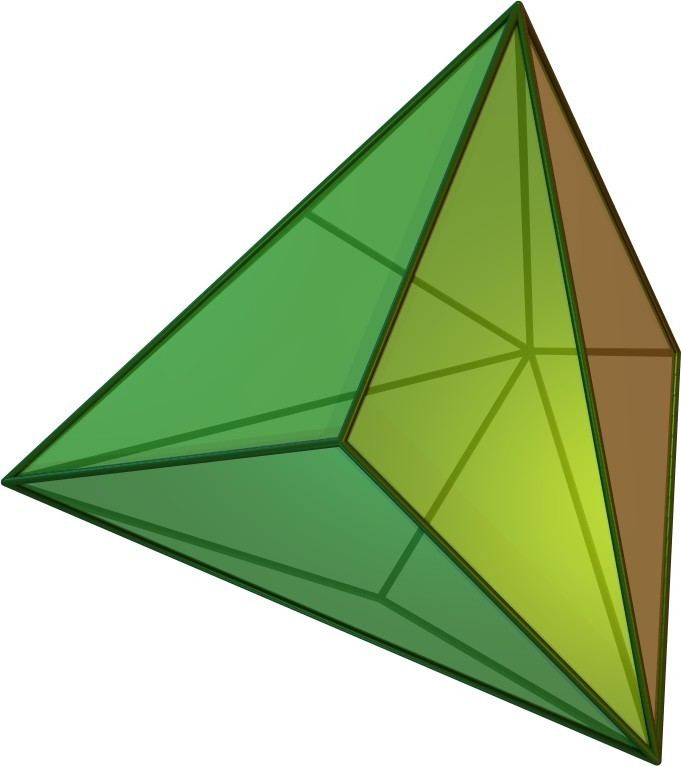 | ||
In geometry, a triakis tetrahedron (or kistetrahedron) is an Archimedean dual solid, or a Catalan solid. Its dual is the truncated tetrahedron.
Contents
It can be seen as a tetrahedron with triangular pyramids added to each face; that is, it is the Kleetope of the tetrahedron. It is very similar to the net for the 5-cell, as the net for a tetrahedron is a triangle with other triangles added to each edge, the net for the 5-cell a tetrahedron with pyramids attached to each face. This interpretation is expressed in the name.
The length of the shorter edges is 3/5 that of the longer edges. If the triakis tetrahedron has shorter edge length 1, it has area 5/3√11 and volume 25/36√2.
Variations
A triakis tetrahedron with equilateral triangle faces represents a net of the four-dimensional regular polytope known as the 5-cell.
If the triangles are right-angled isosceles, the faces will be coplanar and form a cubic volume. This can be seen by adding the 6 edges of tetrahedron inside of a cube.
This chiral figure is one of thirteen stellations allowed by Miller's rules.
Related polyhedra
The triakis tetrahedron is a part of a sequence of polyhedra and tilings, extending into the hyperbolic plane. These face-transitive figures have (*n32) reflectional symmetry.
